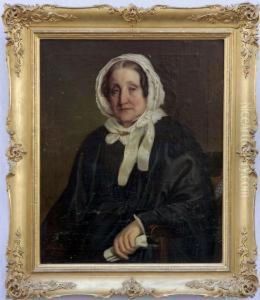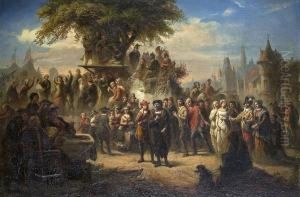August Viereck Paintings
August Viereck was an American sculptor born on August 28, 1885, in Germany. His family emigrated to the United States when he was a child, and he grew up in New Jersey. Viereck showed an early interest in art and particularly in sculpture, which led him to pursue his artistic education at the Art Students League of New York. He also studied at the National Academy of Design, where he honed his sculpting skills and developed his distinctive style.
August Viereck's career spanned several decades, during which he produced a wide range of works, including portrait busts, full-size figures, memorial sculptures, and decorative reliefs. His works often featured realistic representations and were marked by a classical sense of form and proportion, typical of the American Beaux-Arts tradition that was prevalent during the early 20th century.
Viereck's sculptures were well-received, and he garnered a number of commissions for public monuments and memorials. He served in the United States Army during World War I, and his experiences during the war influenced some of his later works that dealt with themes of sacrifice and honor. After the war, he continued to receive important commissions and was an active member of the National Sculpture Society.
Despite the quality of his work and the recognition he received during his lifetime, August Viereck's name is not as widely known today as some of his contemporaries. Nonetheless, he made significant contributions to American sculpture, particularly in the realm of public art. Viereck's legacy can be seen in the collections of various museums and in the public spaces where his sculptures are installed.
August Viereck passed away on April 10, 1962. His death marked the end of a career that had been dedicated to the pursuit of artistic expression through the medium of sculpture. His works remain a testament to his skill and artistic vision, reflecting the cultural and historical milieu of his time.



